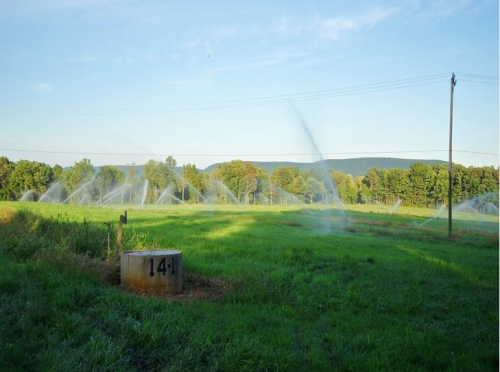
The chemicals in prescription drugs, over-the-counter medications and personal care products enter the wastewater stream and are not removed completely by wastewater treatment plants, Penn State reports. While these compounds are considered to be water pollutants, they are not yet regulated by any water quality standards. They have been detected in surface water, groundwater, wastewater and even drinking water, but the long-term implications for aquatic wildlife and human health are largely unknown.
Researchers in the College of Agricultural Sciences analyzed the fate of seven emerging contaminants: acetaminophen, ampicillin, caffeine, naproxen, ofloxacin, sulfamethoxazole and trimethoprim. They conducted the research at the Penn State Wastewater Treatment plant and the Living Filter, an area of agricultural land where the university spray-irrigates all of its treated wastewater.
The study's goal was to track these compounds through the wastewater treatment plant and ultimately to the wells at the Living Filter to assess the removal efficiency of the plant and the ability of the Living Filter’s soil profile to provide further treatment of the compounds remaining in the effluent. Once a week from October 2016 to March 2017, 24-hour samples were collected after each treatment process through the plant. Water samples were collected monthly from 14 groundwater wells at the Living Filter.
"The study was unique in that it provided a snapshot of soil acting as a biogeochemical filter to remove some emerging contaminants," says Heather Gall, assistant professor of agricultural and biological engineering, who presented the findings at the American Society of Agricultural and Biological Engineers' annual meeting in Spokane, Washington.
"Penn State was the ideal place to look at the movement of pharmaceuticals from wastewater to groundwater because the university has spray-irrigated all of its treated wastewater onto nearly 600 acres of agricultural and forested land known as the Living Filter since the early 1980s," explains Gall. "And nearby wells allow us to look at concentrations of the chemicals that reached the relatively deep groundwater across the site."
In general, the study revealed that the Penn State Wastewater Treatment Plant effectively removed acetaminophen and caffeine. Seasonal variability was seen in the removal efficiency of the other compounds. The plant's activated sludge component was the most effective step for reducing contaminant concentrations. Concentrations in the groundwater were typically at least one order of magnitude lower than the concentrations in the treatment plant effluent, suggesting that the soil generally acted as an effective biogeochemical filter, except during snowmelt events.
Fieldwork for the study was performed in a variety of weather conditions, which affected how the treatment plant dealt with the chemical compounds. Microbes in the treatment process, which break down and remove the contaminants, did not seem to be as efficient during cold, winter conditions.
Low temperatures did not appear to affect the soil's ability to filter out contaminants. However, heavy precipitation and significant snowmelt events decreased removal, meaning that higher concentrations were observed in the wells following these events.
"What was interesting about this project was that these samples primarily were taken in the cold months, and we don't often see field studies done during the winter," Gall says. "So we saw the influence of cold conditions, freeze-thaw cycles and heavy, prolonged rains."





